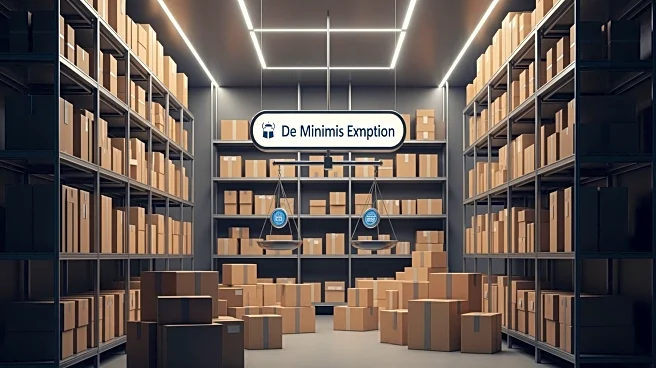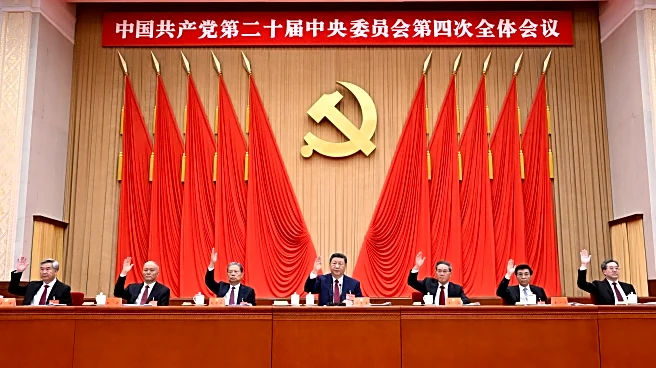What's Happening?
Supply chain managers are facing challenges due to tariff uncertainty, prompting them to explore new risk mitigation strategies. Traditional risk models are proving inadequate in the current environment, where tariffs can fluctuate unpredictably. Managers
are considering options such as stockpiling raw materials to stabilize input costs, especially when tariffs are expected to rise temporarily. Logistics providers have noted increased warehouse fill rates, indicating a strategic response to tariff announcements. Companies like Walmart have expedited shipments to mitigate the impact of tariffs. In industries like automotive, where imported components face higher tariffs than fully assembled overseas products, companies are absorbing some costs to remain competitive. Consumer products face challenges as credit card debt and buy-now-pay-later schemes limit consumer spending capacity. Companies are reassessing tariff classifications and exploring alternative supply chain strategies to navigate these complexities.
Why It's Important?
The tariff uncertainty has significant implications for U.S. industries, affecting cost structures and competitive dynamics. Companies that can effectively manage these risks may gain a competitive edge, while those unable to adapt may face financial strain. The automotive industry, for instance, must balance cost absorption with maintaining market competitiveness. Consumer spending limitations could impact sales, forcing companies to adjust pricing strategies. The broader economic impact includes potential shifts in supply chain strategies, with companies exploring new routes and tariff classifications to minimize costs. This situation underscores the need for flexibility and innovation in supply chain management, as businesses strive to maintain profitability amid fluctuating tariffs.
What's Next?
As tariff uncertainty continues, companies are likely to further refine their risk management strategies. This may involve increased collaboration with supply chain partners to ensure financial stability and continuity. Businesses may also invest in technology and analytics to better predict tariff changes and optimize supply chain operations. The government shutdown could exacerbate challenges, potentially delaying documentation and inspections. Companies will need to stay agile, ready to adapt to new trade policies and regulations. The focus will be on building resilient supply chains that can withstand tariff fluctuations and maintain competitive advantage.
Beyond the Headlines
The tariff uncertainty highlights deeper issues in global trade relations and the need for robust international trade policies. It raises ethical considerations about the impact of tariffs on smaller suppliers and the potential for increased economic inequality. Long-term, this situation could drive innovation in supply chain management, with companies developing new models for risk assessment and mitigation. The evolving trade landscape may also influence geopolitical dynamics, as countries adjust their trade strategies in response to U.S. tariff policies.














